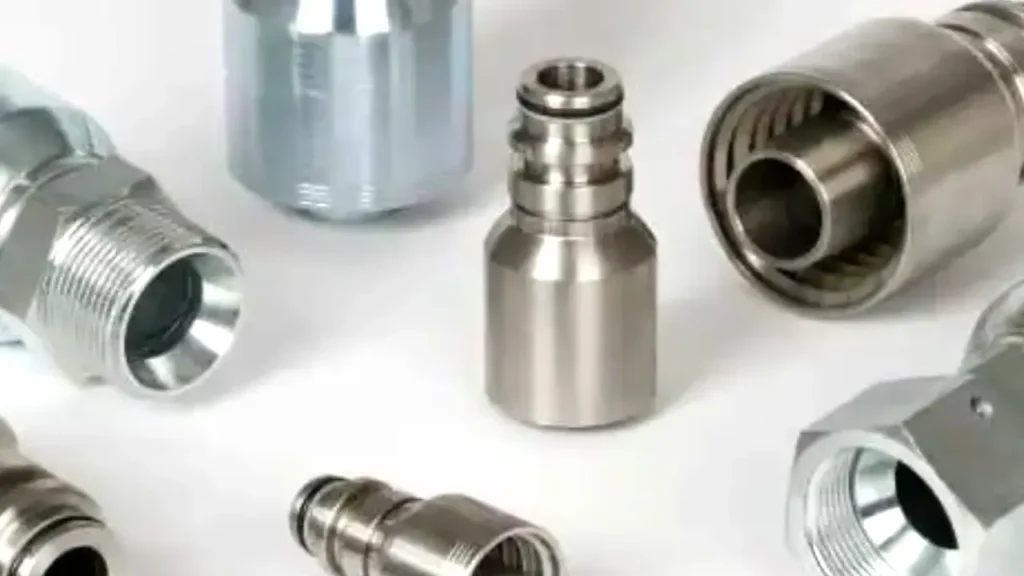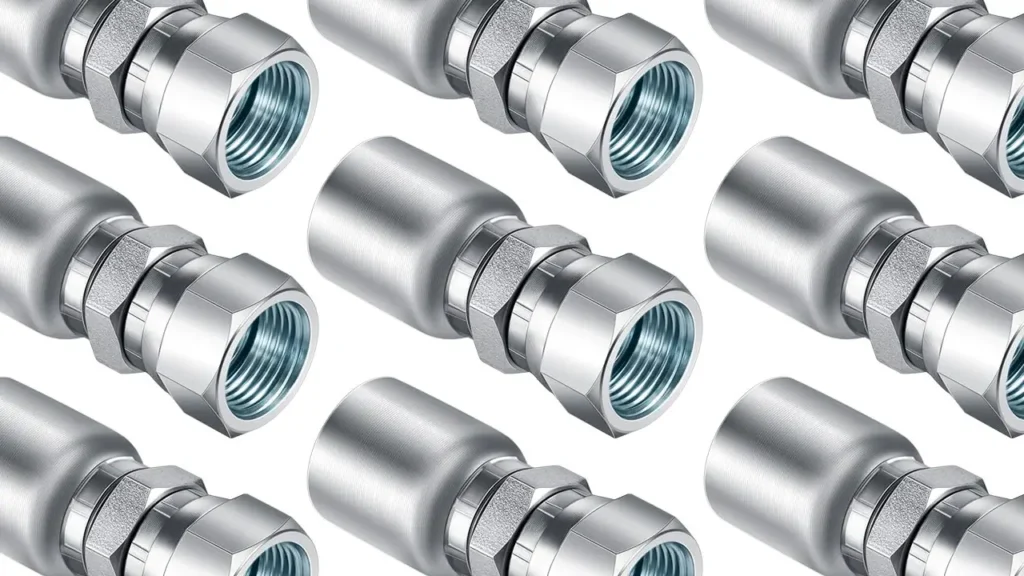Selecting the right hydraulic hose coupling is crucial for ensuring leak-free and efficient hydraulic system performance. With numerous coupling types available, understanding their specific applications and compatibility is essential. This guide will explore the various types of hydraulic hose couplings, helping you make informed decisions for your projects.
We’ll delve into the characteristics of each coupling type, including their pressure ratings, materials, and connection styles. By understanding these factors, you can choose the optimal coupling to meet your system’s demands, preventing costly leaks and system failures.
What Are Hydraulic Hose Couplings

Hydraulic hose couplings are essential components that connect hydraulic hoses to other system elements, such as pumps, valves, cylinders, and other hoses. They provide a secure and leak-free connection, enabling the efficient transfer of hydraulic fluid under high pressure. These couplings are designed to withstand the demanding conditions of hydraulic systems, including high pressures, temperature variations, and mechanical stress.
Couplings come in various types, sizes, and materials to suit different applications and fluid types. Common types include threaded, flanged, and quick-disconnect couplings, each with its own advantages and limitations. Proper selection of hydraulic hose couplings is crucial for maintaining system integrity, preventing leaks, and ensuring safe and efficient operation. Incorrect coupling choices can lead to system failures, downtime, and potential safety hazards.
Hydraulic Hose Coupling Types

Selecting the right hydraulic hose coupling is crucial for ensuring leak-free and efficient hydraulic system operation. Different coupling types serve specific applications, and understanding their characteristics is essential. Here’s a breakdown of common hydraulic hose coupling types.
Hydraulic Threaded Couplings
Hydraulic threaded couplings are among the most common types used in hydraulic systems. They feature screw threads that provide a secure connection between the hose and other components. These couplings are available in various thread standards, including NPT (National Pipe Thread) and BSP (British Standard Pipe), to accommodate different system requirements. Hydraulic threaded couplings are known for their simplicity and ease of installation, making them a popular choice for many applications.
These couplings are versatile and can handle a wide range of pressures and temperatures. However, they require proper tightening to prevent leaks, and frequent assembly and disassembly can lead to thread wear. Hydraulic threaded couplings are suitable for applications where connections are relatively permanent or require infrequent changes, offering a reliable and cost-effective solution for many hydraulic systems.
Hydraulic Flanged Couplings
Hydraulic flanged couplings are designed for high-pressure and large-diameter hydraulic applications. They consist of a flanged head that is bolted to a matching flange on another component, creating a robust and leak-free connection. Hydraulic flanged couplings provide a high level of structural integrity and are capable of withstanding extreme pressures and mechanical stresses. They are commonly used in heavy-duty industrial applications, such as construction equipment and offshore drilling.
These couplings offer excellent sealing performance and are less prone to leaks compared to threaded couplings, especially in high-pressure environments. However, they are generally more expensive and require more space for installation. Hydraulic flanged couplings are ideal for applications where reliability and high-pressure capabilities are paramount, ensuring long-term performance and safety.
Hydraulic Quick-Disconnect Couplings
Hydraulic quick-disconnect couplings are designed for applications where frequent hose connections and disconnections are required. They feature a mechanism that allows for rapid connection and disconnection without the need for tools. These couplings are available in various designs, including ball-type and poppet-type, each with its own advantages. Hydraulic quick-disconnect couplings are commonly used in applications such as mobile equipment, test benches, and fluid transfer systems.
These couplings offer significant time savings and improve efficiency in applications where frequent changes are necessary. However, they may be more susceptible to leaks if not properly maintained or if used in extremely high-pressure environments. Hydraulic quick-disconnect couplings are essential for applications where speed and convenience are critical, providing a reliable and efficient connection solution.
Hydraulic Camlock Couplings
Hydraulic camlock couplings, also known as cam and groove couplings, are designed for low-pressure applications requiring frequent connections and disconnections. They feature a simple cam-locking mechanism that provides a quick and secure connection. Hydraulic camlock couplings are commonly used in applications such as fluid transfer, irrigation, and chemical handling. They are available in various materials, including stainless steel, aluminum, and brass, to accommodate different fluid types and environments.
These couplings are easy to use and offer a cost-effective solution for low-pressure applications. However, they are not suitable for high-pressure systems and may not provide a completely leak-free seal in all applications. Hydraulic camlock couplings are ideal for applications where quick and easy connections are required, providing a reliable and efficient solution for fluid transfer needs.
How to Choose the Right Hydraulic Hose Couplings
Selecting the right hydraulic hose couplings is crucial for ensuring the efficiency and safety of your hydraulic system.1 Incorrect couplings can lead to leaks, system failures, and even hazardous situations.2 To make an informed decision, consider several key factors: operating pressure, temperature range, fluid compatibility, and application requirements.3 Understanding these aspects will help you choose couplings that provide reliable and long-lasting performance.
Here are the key points to consider when choosing hydraulic hose couplings:
Operating Pressure:
Ensure the coupling’s pressure rating exceeds the maximum operating pressure of your hydraulic system. This prevents burst failures and ensures the coupling can withstand the system’s demands without compromising safety or performance.
Temperature Range:
Select couplings that can operate within the temperature range of your hydraulic system. Extreme temperatures can affect the coupling material and seals, leading to leaks or failures.4 Understanding the systems temperature range is vital for long life of the couplings.
Fluid Compatibility:
Choose couplings made from materials compatible with the hydraulic fluid being used. Incompatible materials can corrode or degrade, leading to leaks and system contamination.5 Knowing the fluid type ensures material compatibility.
Application Requirements:
Consider the specific requirements of your application, such as frequency of connections, environmental conditions, and mechanical stress. This ensures the couplings are suitable for the intended use and can withstand the operating environment. Understanding the application is vital for coupling selection.
Get Wholesale Hydraulic Hose Couplings
In conclusion, selecting the right hydraulic hose coupling is vital for ensuring leak-free, efficient, and safe hydraulic system operation. Understanding the various coupling types, their applications, and their pressure ratings prevents costly failures and downtime. Proper material selection and adherence to industry standards guarantee long-term system reliability.
Careful consideration of factors like operating pressure, temperature, fluid compatibility, and application requirements guides you to the optimal coupling choice. Regular inspections and maintenance of couplings are crucial for extending their lifespan and maintaining system integrity. Knowing the coupling type and its limitations ensures your hydraulic systems function optimally.
For a comprehensive range of high-quality hydraulic hose couplings and expert guidance, choose Kingdaflex. We offer wholesale solutions with diverse sizes and materials to meet your specific needs. Contact us today to explore our product offerings and ensure your hydraulic systems operate with maximum efficiency and safety.

